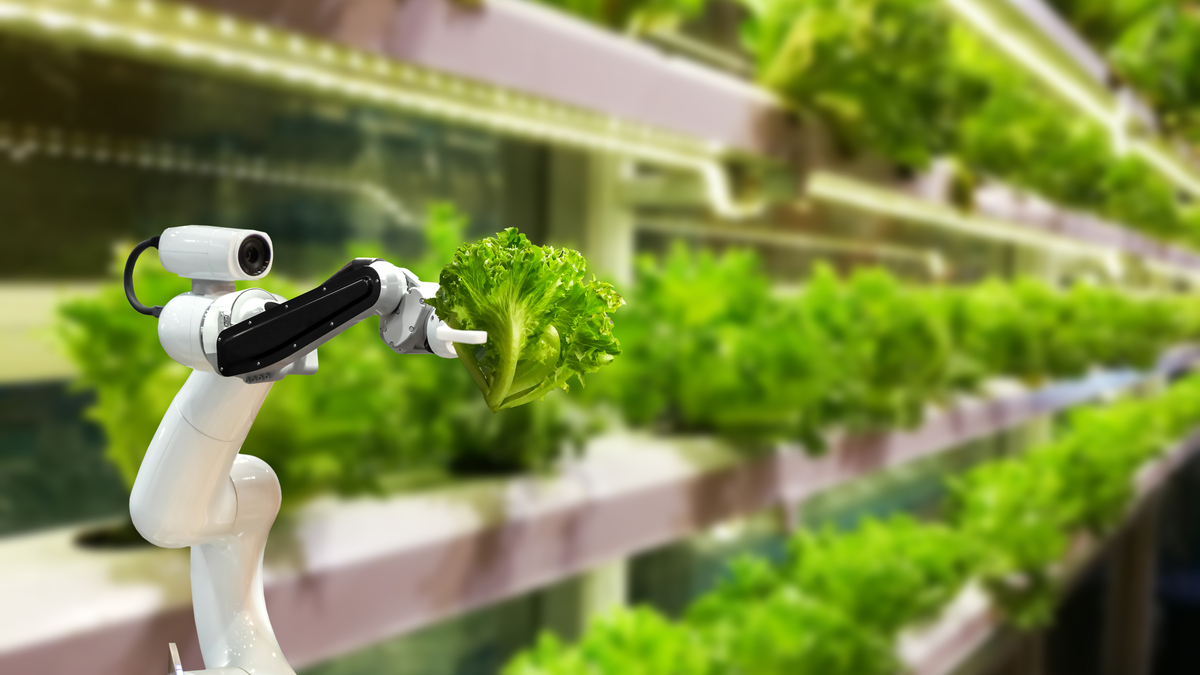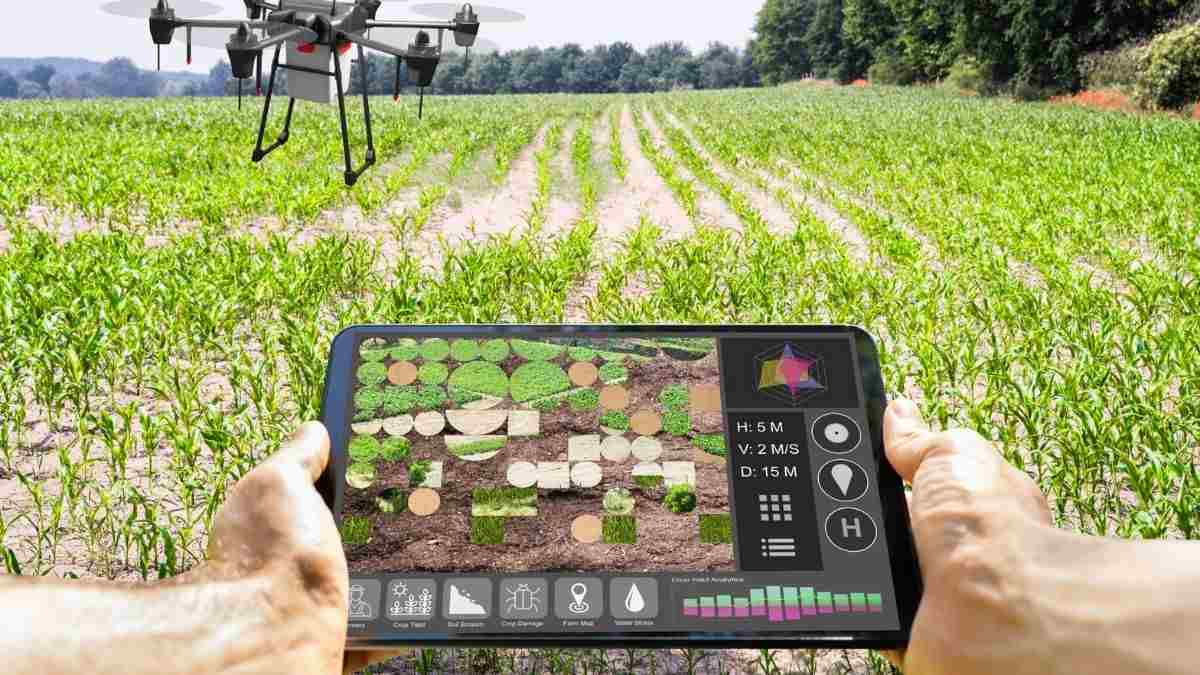Technology has revolutionized the way we live and work, and the agriculture industry is no exception. With the help of technology, farmers are now able to produce more food with less waste, reduce the use of harmful chemicals, and increase their efficiency. In this article, we will explore how technology is enhancing agriculture and food production.
1. Precision Farming
Precision farming is a method of farming that uses technology to optimize crop production. With precision farming, farmers can use sensors, GPS mapping, and data analysis to monitor their crops and make better decisions. This allows them to reduce waste and increase yields.
 Source: bing.com
Source: bing.com2. Drones
Drones are becoming increasingly popular in agriculture. They can be used to monitor crops, spray pesticides, and even plant seeds. Drones are able to cover large areas quickly and efficiently, which saves farmers time and money.
 Source: bing.com
Source: bing.com3. Automated Irrigation Systems
Automated irrigation systems use sensors to monitor soil moisture levels and adjust watering accordingly. This allows farmers to reduce water usage and save money on their water bills. Automated irrigation systems are also more efficient than traditional irrigation methods.
 Source: bing.com
Source: bing.com4. Climate Monitoring
Climate monitoring systems use sensors to monitor weather conditions and provide farmers with real-time data. This allows farmers to make better decisions about planting, harvesting, and irrigation.
 Source: bing.com
Source: bing.com5. Biotechnology
Biotechnology has revolutionized agriculture by allowing scientists to create genetically modified crops that are more resistant to pests and disease. This has led to higher yields and more efficient use of resources.
 Source: bing.com
Source: bing.com6. Vertical Farming
Vertical farming is a method of farming that involves growing crops in vertically stacked layers. This allows farmers to produce more food in a smaller space, which is especially useful in urban areas where space is limited.
 Source: bing.com
Source: bing.com7. Robotics
Robots are becoming increasingly popular in agriculture. They can be used to plant, harvest, and even milk cows. This reduces the need for manual labor and allows farmers to be more efficient.
 Source: bing.com
Source: bing.com8. Big Data
Big data refers to the massive amounts of data that are collected from various sources. In agriculture, big data can be used to analyze weather patterns, soil quality, and crop yields. This allows farmers to make more informed decisions and increase their efficiency.
 Source: bing.com
Source: bing.com9. Mobile Apps
Mobile apps are becoming increasingly popular in agriculture. There are apps that can help farmers monitor their crops, track their expenses, and even predict yields. This allows farmers to manage their farms more efficiently and make better decisions.
 Source: bing.com
Source: bing.com10. Aquaponics
Aquaponics is a method of farming that involves growing plants and raising fish in a symbiotic system. The fish provide nutrients for the plants, and the plants purify the water for the fish. This allows farmers to produce both crops and fish in the same system.
 Source: bing.com
Source: bing.com11. 3D Printing
3D printing is becoming increasingly popular in agriculture. It can be used to create custom parts for farming equipment, as well as to create prototypes of new products. This saves farmers time and money.
 Source: bing.com
Source: bing.com12. Soil Sensors
Soil sensors can be used to monitor soil moisture levels, pH levels, and nutrient levels. This allows farmers to optimize their fertilizer usage and reduce waste.
 Source: bing.com
Source: bing.com13. GPS Mapping
GPS mapping allows farmers to map their fields and monitor their crops more efficiently. This allows them to make better decisions about planting, harvesting, and irrigation.
 Source: bing.com
Source: bing.com14. Smart Tractors
Smart tractors are equipped with sensors and GPS mapping technology. This allows farmers to monitor their fields and adjust their planting and harvesting accordingly. Smart tractors are also more fuel efficient than traditional tractors.
 Source: bing.com
Source: bing.com15. Internet of Things (IoT)
The Internet of Things (IoT) refers to the network of physical devices, vehicles, and buildings that are embedded with sensors, software, and network connectivity. In agriculture, IoT can be used to monitor crops, track equipment, and optimize irrigation.
 Source: bing.com
Source: bing.com16. Artificial Intelligence (AI)
Artificial Intelligence (AI) can be used to analyze data and provide insights for farmers. This allows them to make more informed decisions about planting, harvesting, and irrigation.
 Source: bing.com
Source: bing.com17. Solar-Powered Irrigation Systems
Solar-powered irrigation systems use solar panels to power irrigation pumps. This reduces the need for electricity and saves farmers money on their energy bills.
 Source: bing.com
Source: bing.com18. Autonomous Vehicles
Autonomous vehicles can be used to transport crops and equipment. This reduces the need for manual labor and allows farmers to be more efficient.
 Source: bing.com
Source: bing.com19. Livestock Monitoring
Livestock monitoring systems use sensors to monitor the health and behavior of livestock. This allows farmers to detect and treat health issues more quickly.
 Source: bing.com
Source: bing.com20. Biodegradable Packaging
Biodegradable packaging is becoming increasingly popular in agriculture. It can be used to package fruits and vegetables, as well as to replace traditional plastic packaging.
 Source: bing.com
Source: bing.com21. Blockchain
Blockchain is a digital ledger that can be used to track transactions. In agriculture, blockchain can be used to track the origin and distribution of crops, which allows consumers to make more informed decisions about the food they buy.
 Source: bing.com
Source: bing.com22. Nutrient Management
Nutrient management systems use sensors to monitor soil nutrient levels and adjust fertilizer usage accordingly. This reduces waste and saves farmers money on fertilizer costs.
 Source: bing.com
Source: bing.com23. Agricultural Robots
Agricultural robots are becoming increasingly popular in agriculture. They can be used to plant, monitor, and harvest crops. This reduces the need for manual labor and allows farmers to be more efficient.
 Source: bing.com
Source: bing.com24. Pest Management
Pest management systems use sensors to monitor pest activity and adjust pesticide usage accordingly. This reduces the use of harmful chemicals and saves farmers money on pesticide costs.
 Source: bing.com
Source: bing.com25. Food Safety
Technology can be used to improve food safety by tracking the origin and distribution of food. This allows consumers to make more informed decisions about the food they buy.
 Source: bing.com
Source: bing.com26. Aquaculture
Aquaculture is a method of farming that involves raising fish and other aquatic animals in tanks or ponds. This allows farmers to produce fish in a controlled environment.
 Source: bing.com
Source: bing.com27. Hydroponics
Hydroponics is a method of farming that involves growing plants in nutrient-rich water instead of soil. This allows farmers to produce more food in a smaller space.
 Source: bing.com
Source: bing.com28. Livestock Genetics
Livestock genetics can be used to improve the health and productivity of livestock. This leads to higher yields and more efficient use of resources.
 Source: bing.com
Source: bing.com29. Food Traceability
Food traceability systems use technology to track the origin and distribution of food. This allows consumers to make more informed decisions about the food they buy.
 Source: bing.com
Source: bing.com30. Precision Livestock Farming
Precision livestock farming is a method of farming that uses technology to monitor the health and behavior of livestock. This allows farmers to detect and treat health issues more quickly.
 Source: bing.com
Source: bing.com